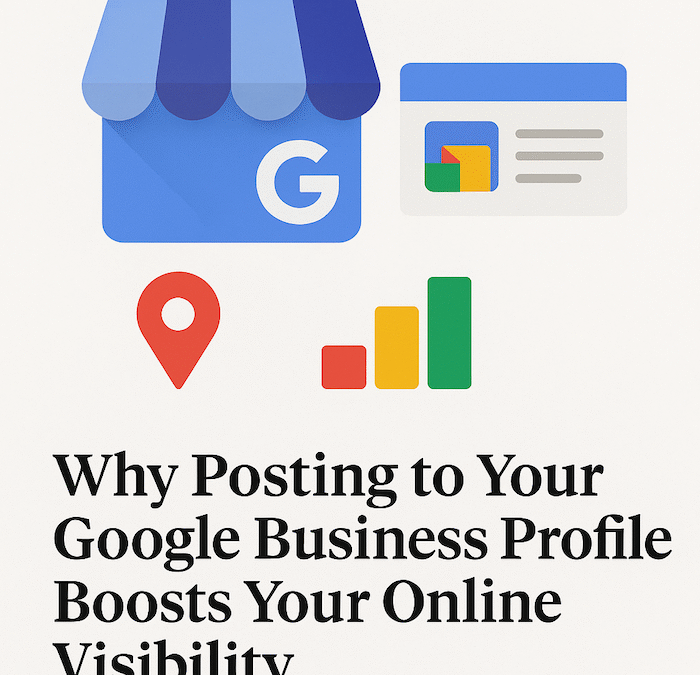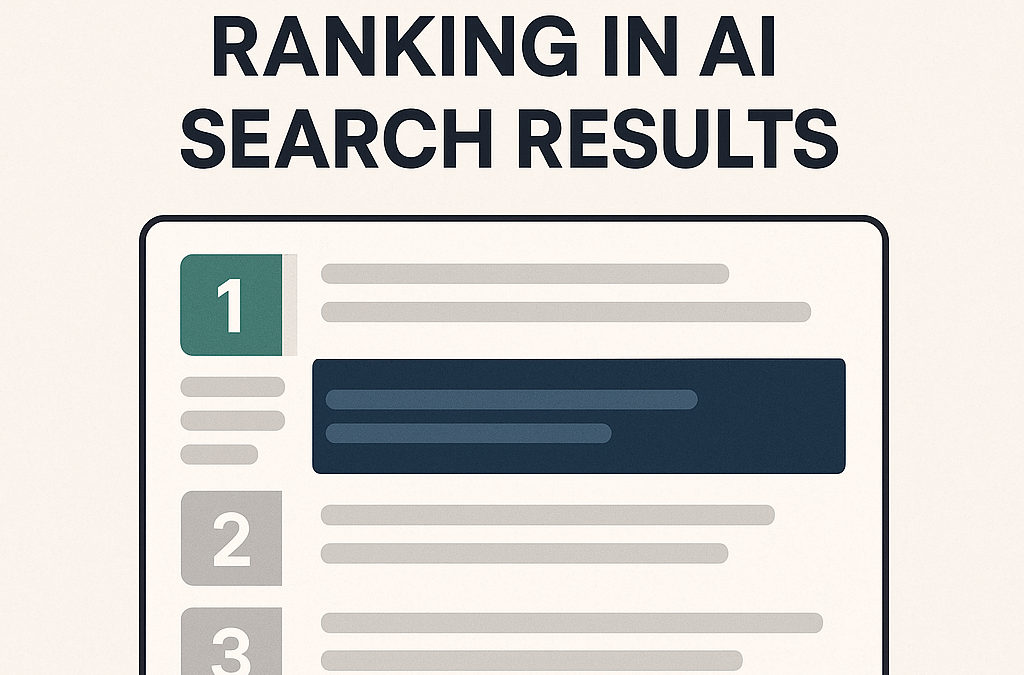Artificial intelligence (AI) has swiftly become an integral part of our lives, reshaping industries and influencing the way we work and live. As we stand on the cusp of 2024, the significance of AI in our world is undeniable. It’s not just a buzzword; it’s a technological revolution that is transforming the way we do everything from healthcare to finance, education to advertising.
The promise of AI is vast, with experts and innovators predicting a future that’s brighter and more efficient, thanks to this remarkable technology. Yet, amidst the excitement, AI faces its share of challenges and uncertainties. In this article, we will delve into how AI is poised to change in 2024 and beyond, examining its current state, predictions for the future, and its profound impact on various industries.
Current State of AI
To understand where AI is headed, we must first grasp its current state. At present, AI is a powerful force, capable of analyzing vast datasets, recognizing patterns, and making predictions with unprecedented accuracy. From chatbots that assist with customer service to recommendation algorithms that predict what you might enjoy watching next, AI is already deeply integrated into our daily lives.
Recent breakthroughs in AI research have pushed the boundaries of what’s possible. Large Language Models (LLMs) and Language Models (LMs), like ChatGPT and Bard, have demonstrated remarkable language understanding and generation abilities. These models can write coherent articles, answer questions, and even generate creative content. This represents a significant leap forward in natural language understanding.
However, AI is not without its limitations. These models, while impressive, still struggle with context and understanding nuance. They can generate plausible-sounding information but may lack genuine comprehension. Furthermore, the data used to train these models can introduce biases, raising concerns about fairness and ethics.
Despite these challenges, AI research continues to advance rapidly. Researchers are constantly refining algorithms, enhancing model architectures, and working towards more robust and ethical AI systems. With each breakthrough, AI moves closer to its potential as a transformative force in society.
The Future of AI: Predictions and Trends
As we peer into the future of AI, the possibilities seem boundless. In 2024 and beyond, AI is poised to impact nearly every facet of our lives. Predictions from experts and industry leaders suggest that we are on the brink of an AI-powered transformation.
One of the most significant trends is increased automation across industries. AI-driven robots and systems are taking on repetitive and mundane tasks, freeing up human workers for more creative and strategic roles. This automation extends from manufacturing floors to office spaces, fundamentally reshaping the nature of work.
AI’s influence on healthcare is set to grow even further. In the coming years, AI will play a pivotal role in disease diagnosis, personalized treatment plans, and drug discovery. Imagine AI-powered tools that can analyze medical data, identify disease patterns, and recommend tailored therapies. It’s a future where healthcare becomes more precise and accessible.
In education, AI is poised to change the way we learn. Traditional schooling is evolving, with AI-driven platforms offering personalized learning experiences. These systems adapt to individual student needs, ensuring that no one is left behind while enabling advanced learners to excel.
Finance is another sector that’s ripe for AI disruption. AI algorithms are already managing investment portfolios with impressive results. The future promises even more sophisticated financial analysis, with AI systems making complex decisions faster and more accurately than humans.
These are just a few glimpses of the AI-driven future we can anticipate. Whether it’s autonomous vehicles on our roads, smart homes that anticipate our needs, or AI-driven content creation, the impact of AI in 2024 and beyond will be profound.
ChatGPT and Bard: How They Differ
In the realm of AI language models, ChatGPT and Bard stand as two prominent examples, each with its unique set of capabilities and applications.
ChatGPT is designed for natural language conversation. It excels at generating human-like text responses and can be used in chatbots, virtual assistants, and customer support systems. ChatGPT is known for its versatility and can handle a wide range of conversational topics.
On the other hand, Bard takes a different approach. It focuses on creative content generation, making it well-suited for tasks like writing articles, stories, or poetry. Bard’s unique capability lies in its ability to generate imaginative and contextually relevant content, making it a valuable tool for content creators.
Understanding LLM and LM
Large Language Models (LLMs) and Language Models (LMs) form the backbone of AI-powered natural language processing. LLMs are massive neural network models with billions of parameters, allowing them to understand and generate human-like text on a vast scale. LLMs like ChatGPT and Bard are the result of extensive training on massive datasets, which enables them to comprehend and produce text in a coherent and contextually relevant manner.
Language Models (LMs) are a broader category that includes various sizes and complexities of models used in natural language processing tasks. LMs can range from smaller models that perform simpler tasks to massive LLMs that tackle complex language understanding and generation tasks.
These models are crucial in numerous AI applications, including chatbots, content generation, sentiment analysis, and more. They are at the forefront of AI advancements in natural language understanding and are instrumental in transforming how we interact with machines and access information.
Generative AI Search: A New Era of Information Retrieval
Generative AI search systems are at the forefront of a revolutionary shift in how we access and generate information. Traditional search engines have long relied on keyword matching and predefined indexes to retrieve data, a method that has served us well. However, the emergence of generative AI search marks a profound paradigm shift in the field of information retrieval and content generation.
Understanding Traditional Search Engines
Traditional search engines excel at matching keywords from user queries to those found in indexed web pages. While effective, this approach has limitations. It often leads to search results that are contextually limited and may not fully address the user’s intent. Users are left to sift through pages of search results to find the most relevant information.
Generative AI Search: Nuanced Understanding and Content Creation
In stark contrast, generative AI search systems leverage the power of AI language models to comprehend user queries in a more nuanced and context-aware manner. These systems don’t merely match keywords; they seek to understand the user’s intent and context behind their queries.
This nuanced understanding enables generative AI search systems to provide contextually relevant responses. When a user poses a question, these systems can generate custom-written answers that align with the user’s specific needs. This approach goes beyond simply returning web pages; it crafts responses that are tailored to the unique requirements of each user.
The Implications of Generative AI Search
The implications of generative AI search are far-reaching and transformative:
Content Generation
Generative AI search systems have the capability to create content dynamically. For content creators, this means that AI can assist in generating articles, reports, or even creative pieces based on a given topic or concept. This reduces the time and effort required to produce high-quality content.
Customer Support
In customer support, generative AI search can offer more personalized and immediate assistance. It can craft responses to user queries that address specific issues, leading to more efficient and satisfying customer interactions.
Personalized Information Retrieval
Users can expect a more tailored information retrieval experience. Rather than sifting through a list of links, generative AI search systems present users with direct, contextually relevant answers to their questions.
Adaptive Search
Generative AI search systems adapt to the user’s preferences and evolving context. They learn from user interactions and improve the accuracy of their responses over time, creating a more dynamic and adaptive search experience.
Efficiency and Precision
By understanding user intent, generative AI search reduces the need for multiple search iterations. Users can find the information they seek more efficiently and with greater precision.
Transformative Shift in Information Retrieval
Generative AI search represents a transformative shift in information retrieval and content generation. It’s a departure from traditional keyword-based search engines, offering a more contextually aware and adaptive approach. The technology holds promise in various fields, from content creation to customer support, providing users with a more dynamic, personalized, and efficient way to find and create content on the internet. As it continues to evolve, generative AI search has the potential to redefine how we interact with information in the digital age.
AI in the SEO Tools
The field of search engine optimization (SEO) has experienced a significant transformation thanks to AI. Traditional SEO strategies often involve keyword research, backlink building, and content optimization. While these techniques are still relevant, AI has added a layer of sophistication to SEO practices.
AI-driven SEO tools leverage machine learning algorithms to analyze vast amounts of data and identify trends and patterns in search engine algorithms. This allows marketers to make data-driven decisions, optimize content for relevant keywords, and predict changes in search engine rankings.
One of the key benefits of AI in SEO is its ability to provide personalized recommendations. AI-powered tools can suggest content changes, and backlink opportunities, and even predict which keywords are likely to perform well in the future. This level of automation and insight helps marketers stay ahead in the ever-evolving world of SEO.
AI Tools Across Industries
The application of AI tools spans across a wide range of industries, revolutionizing the way businesses operate. In healthcare, AI assists in disease diagnosis, drug discovery, and patient care. Financial institutions use AI for fraud detection, portfolio management, and algorithmic trading. In education, AI enhances personalized learning experiences and automates administrative tasks.
Manufacturing benefits from AI-driven automation, while the military relies on AI-assisted technologies for improved mission efficiency. In the transportation sector, self-driving vehicles and predictive maintenance are becoming a reality. Advertising and marketing leverage AI for data analysis, content generation, and targeted campaigns.
These examples illustrate the diversity of AI’s impact, showcasing its adaptability and transformative potential in various sectors.
Advantages and Disadvantages of AI
AI offers a multitude of advantages, including increased efficiency, automation of repetitive tasks, and the ability to process vast amounts of data rapidly. Businesses benefit from improved decision-making and cost reduction through AI-driven insights. Additionally, AI can enhance safety and convenience in everyday life, from autonomous vehicles to smart homes.
However, AI also poses ethical and social challenges. Concerns about data privacy and security are paramount. AI algorithms can perpetuate biases present in training data, leading to discrimination and unfair decision-making. The potential for job displacement due to automation is another pressing issue. Ethical AI development and responsible use are critical to mitigate these disadvantages.
The Evolution of AI Technology: Advancements in Accuracy and Understanding
AI technology is on an evolutionary trajectory characterized by a series of remarkable advancements. These strides signify a significant departure from early AI systems. The progress in AI technology spans several key dimensions, each contributing to its growing impact on various industries and applications.
Accuracy at the Forefront: AI’s Continuous Improvement
One of the most notable facets of AI’s evolution is its increasing accuracy. Modern AI models, often powered by deep learning algorithms, have transcended the capabilities of their predecessors. They can now understand human language with remarkable precision, grasping the subtleties of context and nuances in communication. This improvement has profound implications for natural language processing tasks, making AI more proficient in tasks such as text comprehension, translation, and sentiment analysis.
The Need for Speed: Real-Time AI Applications
Another transformative aspect of AI’s evolution is its speed. AI models are now capable of real-time processing, enabling applications that were once deemed futuristic. Whether it’s real-time language translation during video calls, instant image recognition, or autonomous vehicle decision-making, the enhanced speed of AI models has expanded their utility across diverse industries. This speed is made possible by advancements in both hardware and software, including the development of specialized AI chips.
Adaptability through Transfer Learning
AI’s adaptability has seen a significant boost through techniques like transfer learning. Traditionally, AI models were trained for specific tasks and domains, limiting their versatility. However, transfer learning enables AI models to apply knowledge gained in one domain to solve problems in entirely different areas. This capability has led to AI models that can transfer their understanding from image recognition to medical diagnosis or from natural language understanding to content generation. It fosters a more flexible and resource-efficient approach to AI development.
Driving Progress: Ongoing Research and Development
Behind these advancements lies a bustling ecosystem of research and development in the field of AI. Researchers and engineers are continuously pushing the boundaries of what AI can achieve. They tackle complex challenges, such as bias mitigation, explainability, and fairness, to ensure that AI systems are robust and ethically sound.
Mitigating Bias in AI
Bias in AI systems has garnered significant attention, and researchers are actively working on strategies to mitigate it. This involves careful data curation, algorithmic adjustments, and the development of fairness-aware machine learning models. The aim is to create AI systems that treat all users fairly and equitably, regardless of their background or characteristics.
Explainability for Trust and Accountability
AI systems are becoming more transparent and explainable. Researchers are developing techniques to make AI decisions understandable to humans. This is crucial in high-stakes applications like healthcare and finance, where trust and accountability are paramount. Explainable AI ensures that AI-driven decisions can be scrutinized and validated.
Fairness as a Fundamental Principle
Ensuring fairness in AI systems is an ongoing endeavor. Researchers are working to identify and rectify biases that can inadvertently emerge in AI algorithms. By adhering to fairness principles, AI technology aims to avoid reinforcing existing societal biases and to provide equitable outcomes for all users.
The evolution of AI technology is marked by continuous improvements in accuracy, speed, and adaptability. These advancements are driven by tireless research and development efforts, which aim to address critical challenges such as bias mitigation, explainability, and fairness. As AI continues to progress, it holds the potential to transform industries and positively impact society, all while adhering to ethical and responsible AI development practices.
Modern Digital Marketers and AI
Digital marketers have embraced AI as a powerful tool in their arsenal. AI enables personalized marketing campaigns by analyzing user behavior and preferences. Marketers can deliver targeted content and advertisements to specific demographics, increasing engagement and conversion rates.
Data analysis is another area where AI shines. Marketers can process vast datasets to uncover valuable insights about consumer behavior, market trends, and campaign performance. AI-driven tools provide real-time analytics, allowing marketers to make informed decisions and optimize strategies on the fly.
Efficiency Gains in Processes
AI has become a linchpin in improving business efficiency and cost-effectiveness. Automation powered by AI can handle repetitive tasks, reducing human error and freeing up employees to focus on more complex and creative aspects of their jobs. In manufacturing, AI-driven robots can optimize production lines, leading to higher output and lower operational costs. In customer service, chatbots powered by AI provide round-the-clock assistance, enhancing responsiveness while reducing labor costs. The result is leaner, more efficient operations across various industries.
Translation of Content into Different Languages
The globalization of businesses and the internet has created a demand for content to be available in multiple languages. AI-driven translation tools have stepped in to bridge language barriers. These tools can rapidly and accurately translate content, making it easier for companies to reach global audiences. This has a significant impact on global marketing, as it allows for culturally sensitive and relevant content to be delivered to diverse markets, expanding a company’s reach and relevance.
AI’s Effects on Coding, App Development, and Software Development
AI is transforming the world of coding and software development. AI-driven code generators can assist developers in writing code more efficiently and with fewer errors. This accelerates the software development process, reducing time-to-market for applications and reducing development costs. Additionally, AI can assist in software testing, identifying bugs and vulnerabilities more effectively. The result is more robust and secure software, benefiting both developers and end-users.
AI and AR/VR
Augmented reality (AR) and virtual reality (VR) technologies are becoming increasingly intertwined with AI. AI can enhance the immersive experiences of AR and VR by recognizing objects, optimizing graphics, and providing real-time interactions. For example, AI can enable AR applications to recognize and augment physical objects or help VR simulations adapt to user behavior in real-time. This synergy is driving innovation in the AR/VR industry and creating new possibilities for entertainment, training, and beyond.
The Metaverse and AI
The concept of the metaverse has captured the imagination of technologists and visionaries alike. It represents a collective virtual shared space, a digital realm where people can interact, socialize, work, and play in ways that transcend the boundaries of physical reality. This visionary concept has gained significant momentum in recent years as technology has advanced to make it increasingly plausible.
AI as the Architect of the Metaverse
At the heart of this ambitious vision lies artificial intelligence (AI). AI is the driving force behind the development and sustenance of the metaverse. It functions as the architect, shaping the metaverse’s virtual environments, facilitating social interactions, and generating content that populates this digital universe.
Virtual Environments Powered by AI
AI’s role in the metaverse begins with the creation of virtual environments. AI algorithms are employed to design, model, and render these digital spaces. These environments can range from realistic recreations of physical locations to fantastical realms limited only by the bounds of creativity. AI ensures that these spaces are immersive, interactive, and adaptable to user preferences.
Enhancing Social Interactions
In the metaverse, social interactions are a central component. AI is pivotal in making these interactions engaging and lifelike. AI-driven avatars, representing users, are becoming increasingly sophisticated. They can mimic human expressions, gestures, and even emotions, creating a sense of presence and connection that blurs the line between the physical and virtual worlds.
Content Generation for a Dynamic Metaverse
Content generation within the metaverse is a continuous and dynamic process. AI algorithms are responsible for generating vast amounts of content, from virtual objects and landscapes to interactive experiences and narratives. AI ensures that the metaverse is a constantly evolving, vibrant space with an abundance of engaging activities and opportunities.
The Metaverse’s Impact Across Sectors
The metaverse’s emergence has far-reaching implications across various sectors. In communication, it offers new ways for people to connect, collaborate, and socialize. In entertainment, it transforms the way we consume media, offering immersive experiences beyond traditional forms of entertainment. In education, the metaverse opens doors to interactive and engaging learning environments. In commerce, it provides unique opportunities for virtual storefronts, trade, and economic activities.
AI-Enabled Immersive Experiences
What sets the metaverse apart is its potential to provide immersive, interconnected digital experiences. AI ensures that these experiences are not only visually stunning but also deeply interactive and responsive. Users can explore, create, and interact with others in ways previously unimaginable.
A Future Shaped by AI and the Metaverse
The metaverse’s emergence signals a future where AI and virtual reality intersect to create a new dimension of human experience. It offers possibilities for not just entertainment but also education, remote work, healthcare, and beyond. As AI-driven avatars and virtual environments continue to evolve, the metaverse is on track to revolutionize the way we live, work, and interact, ushering in a new era of digital connectivity and exploration.
The metaverse represents an ambitious vision of a collective virtual shared space, and AI stands at its core, shaping and powering this digital universe. As AI-driven avatars and virtual environments become more advanced, the metaverse is poised to revolutionize the way we communicate, entertain, learn, work, and conduct commerce. It’s a future where AI enables immersive, interconnected digital experiences that bridge the gap between physical and virtual reality.
AI’s Relative Infancy and Future Potential
Despite the remarkable advancements, AI is still in its infancy relative to its future potential. Current AI models are just the tip of the iceberg. Experts anticipate that AI will continue to evolve, becoming more adaptable, ethical, and capable. From AI-driven medical breakthroughs to autonomous vehicles that redefine transportation, the potential for AI to reshape our world is virtually limitless.
Experts’ Consensus: A Bright Future for AI
Leading experts and researchers in the field of artificial intelligence (AI) share a common vision—a future where AI plays an integral role in shaping our daily lives and addressing some of the most profound challenges facing society. Their collective outlook reflects the immense potential that AI holds across various domains.
AI’s Pervasive Influence on Daily Life
Experts in AI foresee a world where AI is seamlessly integrated into our daily lives. From the moment we wake up until we retire for the night, AI technologies are expected to enhance our routines. In the morning, AI-driven virtual assistants could provide personalized news updates and schedule reminders. Throughout the day, AI-powered applications may assist with tasks ranging from work-related analytics to health monitoring. In the evening, AI-driven entertainment and education platforms may offer tailored content.
Addressing Society’s Most Pressing Challenges
AI is seen as a powerful tool to address complex societal challenges. Experts foresee AI contributing to solutions for climate change, energy efficiency, and healthcare disparities. Climate modeling powered by AI can provide insights into mitigation strategies, while AI-driven data analytics can optimize energy consumption. In healthcare, AI’s predictive capabilities can lead to earlier disease detection and more effective treatments.
The Emphasis on Responsible AI Development
While the prospects of AI are undeniably promising, experts are acutely aware of the ethical and societal considerations that accompany AI’s proliferation. Responsible AI development is paramount. This means ensuring that AI systems are designed with fairness, transparency, and accountability in mind. It entails addressing bias in AI algorithms, safeguarding privacy, and ensuring that AI serves the best interests of humanity.
Ethical Considerations: Navigating AI’s Impact
Ethical considerations loom large in discussions about AI’s future. Experts emphasize the importance of defining clear ethical guidelines for AI development and deployment. These guidelines should encompass issues such as the ethical treatment of data, the avoidance of discriminatory outcomes, and the responsible use of AI in decision-making processes.
Regulations: Guardrails for AI Development
In addition to ethical considerations, experts call for robust regulations that govern AI. Such regulations would provide a framework for AI development, balancing innovation with safeguards. They could address issues like data privacy, algorithmic accountability, and cybersecurity, ensuring that AI technologies are deployed safely and responsibly.
The consensus among leading experts and researchers in AI is clear: the future of AI is exceptionally bright. Its potential to transform daily life, industries, and society is unparalleled. However, this optimistic vision is underpinned by a commitment to responsible AI development, ethical considerations, and the implementation of necessary regulations. These safeguards are vital to ensure that AI continues to benefit humanity and remains a force for positive change in our rapidly evolving world.
AI’s Impact on Various Industries
The transformative potential of AI extends far beyond individual experiences. Experts unanimously agree that AI will continue to reshape industries. In healthcare, AI is predicted to revolutionize diagnostics, treatment planning, and drug discovery, potentially saving countless lives. In finance, AI-driven algorithms are anticipated to refine investment strategies and risk management, enhancing economic stability. In education, AI-powered personalized learning will adapt to individual student needs, boosting educational outcomes.
AI in Healthcare
In the field of healthcare, AI has emerged as a lifesaver. AI-powered diagnostic systems can analyze medical data, identify disease patterns, and recommend treatment options with remarkable accuracy. These AI-driven tools are revolutionizing healthcare by providing faster and more precise diagnoses, ultimately leading to improved patient outcomes.
AI in Finance
The financial industry is experiencing a seismic shift with the introduction of AI. In trading, AI algorithms analyze market data and execute transactions at lightning speed, surpassing human capabilities. Additionally, AI-driven financial management tools offer portfolio optimization, risk assessment, and fraud detection, transforming the way financial institutions operate.
AI in Education
Education is undergoing a transformation with AI-powered personalized learning experiences. AI algorithms analyze student performance data to tailor educational content and strategies to individual needs. This approach not only helps struggling students catch up but also challenges advanced learners to excel, resulting in improved educational outcomes.
AI in the Military and Cybersecurity
AI-assisted technologies have revolutionized the military and cybersecurity sectors. Autonomous weapon systems equipped with AI can perform various tasks, enhancing security while reducing the risk to human personnel. AI algorithms are also employed to identify and mitigate cybersecurity threats, ensuring the protection of sensitive data and critical infrastructure.
AI in Transportation
The transportation industry is at the forefront of AI innovation, thanks to autonomous vehicles. AI algorithms power self-driving cars, trucks, and drones, promising safer and more efficient transportation systems. These vehicles can navigate complex environments, reducing accidents and congestion while offering greater mobility to individuals.
AI in Advertising
In the realm of advertising and marketing, AI is optimizing campaigns with data-driven precision. AI-powered tools analyze consumer behavior, enabling marketers to deliver highly targeted and relevant content. This approach generates higher engagement rates, better conversion rates, and a more efficient allocation of marketing resources.
These examples underscore the expansive reach of AI’s influence across various industries. Each sector benefits from AI’s capabilities, whether it’s saving lives in healthcare, optimizing financial strategies, enhancing education, bolstering security, reshaping transportation, or revolutionizing marketing practices. The transformative power of AI is undeniable, and its impact continues to evolve as technology advances.
Transformative Power of AI
The transformative power of AI in 2024 and beyond cannot be overstated. As we navigate this AI-driven future, it’s essential to balance innovation with responsibility. AI has the potential to improve our lives, but it also raises ethical, social, and economic questions. It is incumbent upon us to harness AI’s potential while addressing its challenges through thoughtful development and regulation. By doing so, we can ensure that AI remains a powerful force for positive change in our ever-evolving world.









